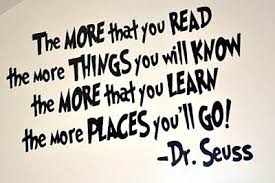In a good book, the best is between the lines. Swedish Proverb
We had a great professional development yesterday. The topic was Getting Students to respond to text. Kids need to talk more about what they read. Allington calls this "purposeful talk". Purposeful talk is where students have conversations and discussions that further thinking. I know when I finish a good book I want to find someone else who has read it so we can talk about it.
Reading discussions must be taught. The teacher needs to model several ways to have a discussion. The lesson needs to teach the kids how to listen and talk to each other. Expectations need to be made clear.
There are several strategies that encourage purposeful talk. A few are described below.
Jigsaw
One such strategy is called Jigsaw. Jigsaw is where students work in small groups. Each group member is assigned a small portion of a larger text. The student is responsible for reading and discussing their part. Then the individual reports about their section to their group.
When each group member has finished, everyone in the group will understand what the whole text is about.
Paired Reading
Students pair up and respond to the literature. The students may be paired by interests, questions, or topic of their book. Partners are frequently switched. The teacher needs to model that the listener has the most important job which is to pay attention, think about, and respond to the text being read.
Book Clubs and Literature Circles
Students meet in groups to discuss and respond to the text they have read. The group will have read the same book. The goal of these groups is to have students express their thoughts, ask questions, and connect the text to their own lives.
Turn and Talk
Turn and Talk is used during whole class instruction. Every so often the group stops and turns to their partner to discuss what is being taught. This helps students process information, helps understanding, and encourages student engagement.
Compass Share
The students are in groups of four in each. The students then sit in a circle facing N,S,E, and W. The teacher announces that it is north's turn. North then shares and responds to the text. After a few minutes the teacher announces that it's another direction's turn. This continues until everyone has had a turn.
When having students discuss their text it is important to create a safe environment where everyone is comfortable sharing. As mentioned above it is extremely important the students are taught how to interact with each other, listen to each other, and show respect for each other.
As you plan for your classroom, I hope you will include purposeful talk in your lesson. It is amazing the insight your students will have on a topic.
Until next time,
Happy Reading!
Friday, November 7, 2014
Monday, November 3, 2014
Video Taping Yourself: Who Knows You May be a Star!
Video Taping Yourself: Who Knows You May be a Star!

Hannah had her first major presentation for her education class the other day. When she finished she texted me about how nervous she was in front of her peers. I was instantly taken back many years (too many to count) to one of my education classes where I had to teach the class something and the teacher video taped us! (yes, video was invented, we didn't have to chisel the images in stone!) I can't believe I continued in education after watching that video! It's funny how we can get in front of a classroom full of students and not be nervous, but when it comes to presenting to our peers it's another story. Actually, the video taught me a lot of things. It taught me not to say "okay" after every instruction. It taught me how to be more animated with my students. It also taught me about not talking so much and letting the student do the talking. Yes, many things can be learned from viewing a video of yourself teaching. The problem is do you have the nerve to watch it????!!!! Try it. You will learn a lot! Who knows you may become a YouTube star!
Oh yeah, Hannah's group got a 95 on their presentation. So proud of her!
Subscribe to:
Comments (Atom)